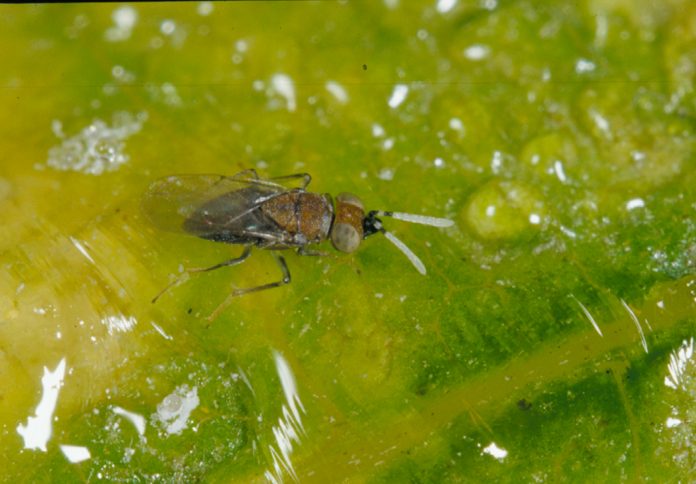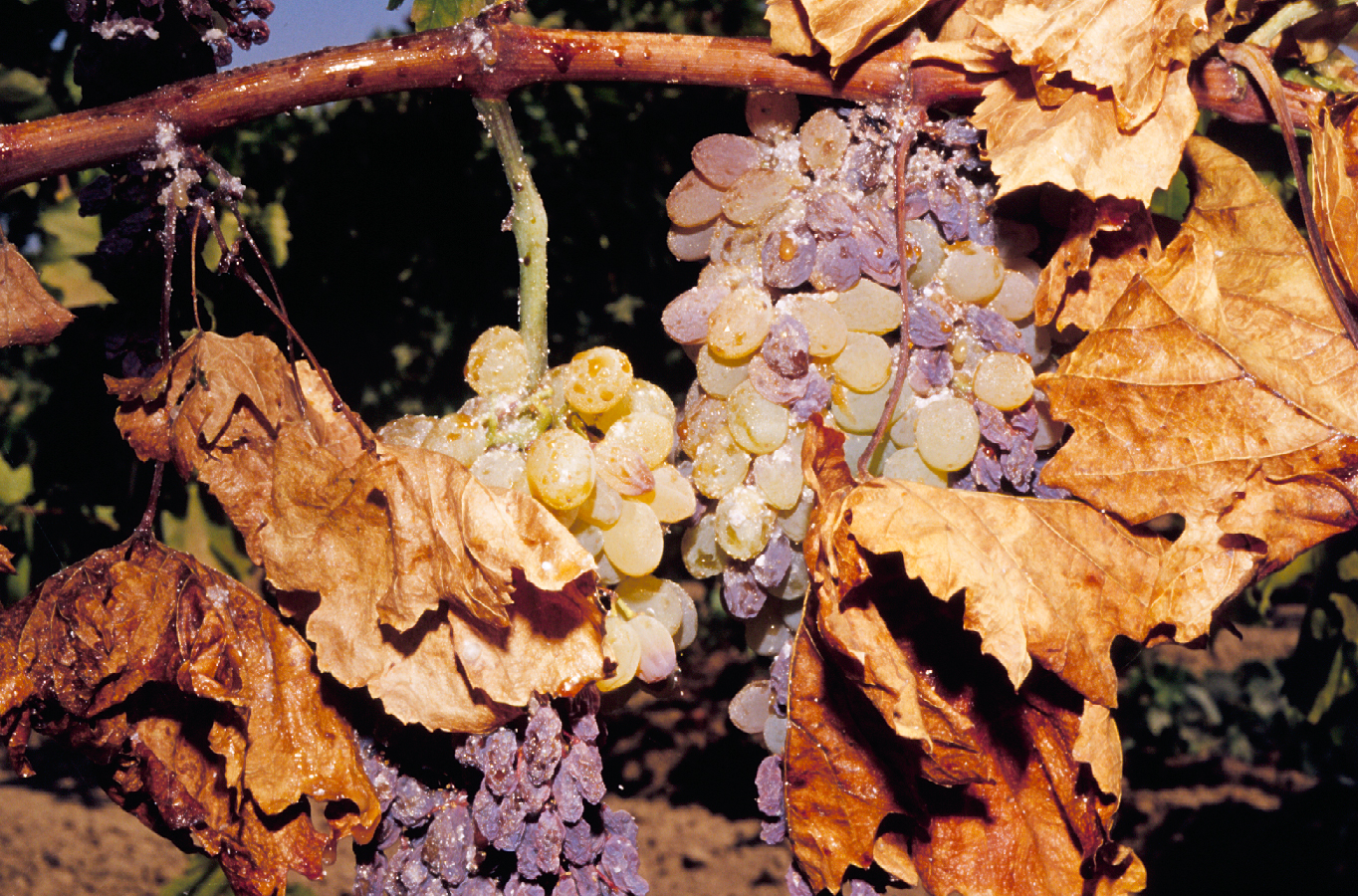

Preventing vine mealybug infestations before grape clusters are damaged requires vineyard scouting and management strategies, including chemical selection and well-timed applications.
Adult vine mealybug, Planococcus ficus, are notable for the white, mealy wax that covers their bodies. Vine mealybugs infest grape clusters, produce honeydew that serves as a substrate for black sooty mold on grape clusters and can transmit grapevine leafroll-associated viruses.
Bayer Crop Science representative Manuel Jimenez said cool spring weather delays emergence of this pest from vine roots and from under bark. Where control measures are not taken, populations can build resulting in higher numbers the following year.
Prevention measures need to be taken before mealybugs move into grape clusters, Jimenez said.
Scouting to determine extent of an infestation and application of a systemic insecticide before mealybugs emerge in June is critical to avoiding damage. Numbers can explode quickly by mid summer and then the battle is lost, Jimenez said.
A foliar application of Movento at the beginning of bloom is advised. Another option is soil applied Admire in April. Another early season material, Applaud will also give some residual contact.
Stephen Vasquez, viticulturalist with Sun Maid Growers said ant infestations on vineyards are often an indication that VMB has invaded. VMB is a food source for ants, supplying them with honeydew. Adult female VMB secretes large amounts of honey dew and the native grey ant tends and protects them. Controlling ants, Vasquez said will open up VMB to attack by predators and parasitoids.

Training field crews to identify signs of VMB infestation during pruning, leaf removal and harvest also aids in early detection.
In addition to controlling ants in vineyards, Vasquez said a robust integrated pest management program yields the best results in VMB control. Biology of VMB presents some unique control challenges, and targeting different reproductive stages with different approaches is recommended. After identifying the presence and density of VMB, implement IPM strategies to reduce the population. Those strategies can include biological control, mating disruption, contact insecticides, and insect growth regulator materials.
According to the UC IPM guidelines, the most successful predator has been Anagyrus pseudococci, which can be effective late in the season to reduce VMB populations present after harvest before they return to roots or lower trunk for to overwinter. In coastal regions, the mealybug destroyer beetle can be used to attack eggs and crawlers.
Mating disruption success requires a higher concentration of VMB sex pheromone than pheromone traps can provide; dispensers or sprayable formulations are needed to disperse the pheromone throughout the entire vineyard.





















